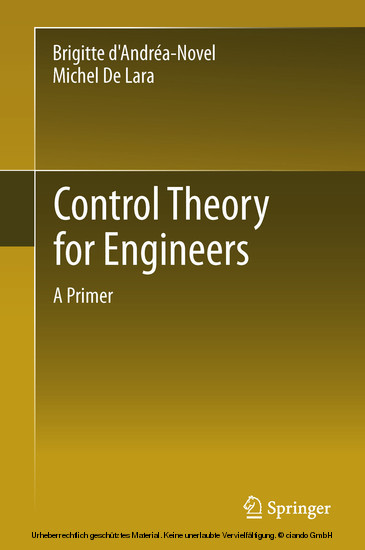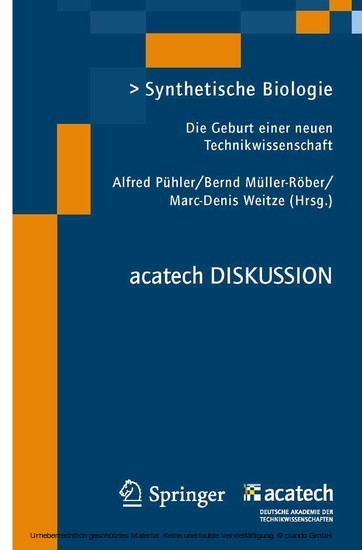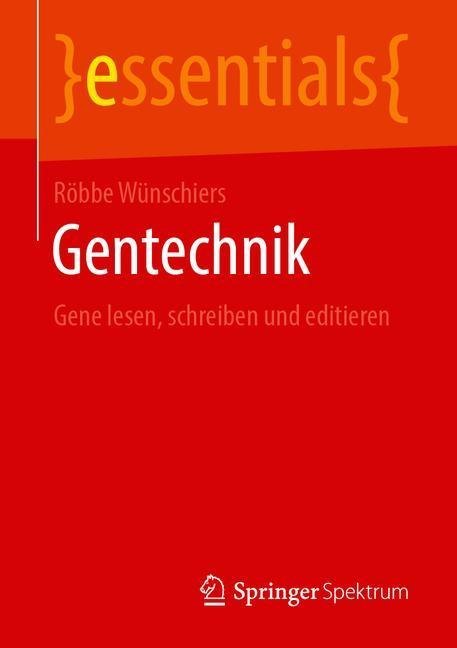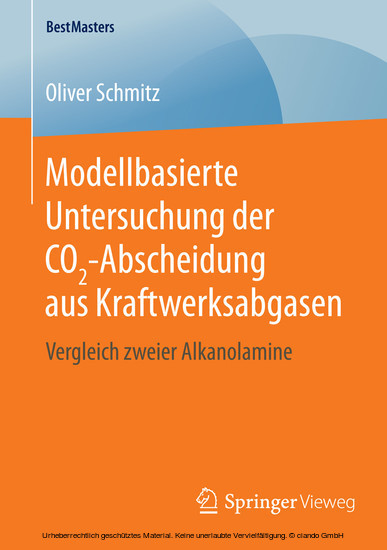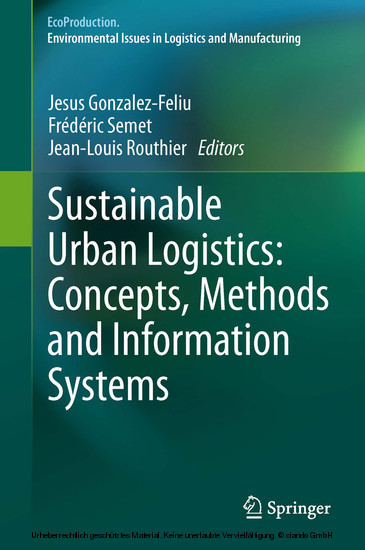Control Theory for Engineers
A Primer
Control Theory is at the heart of information and communication technologies of complex systems. It can contribute to meeting the energy and environmental challenges we are facing.
The textbook is organized in the way an engineer classically proceeds to solve a control problem, that is, elaboration of a mathematical model capturing the process behavior, analysis of this model and design of a control to achieve the desired objectives.
It is divided into three Parts. The first part of the text addresses modeling aspects through state space and input-output representations. The notion of the internal state of a system (for example mechanical, thermal or electrical), as well as its description using a finite number of variables, is also emphasized. The second part is devoted to the stability analysis of an equilibrium point. The authors present classical tools for stability analysis, such as linearization techniques and Lyapunov functions.
Central to Control Theory are the notions of feedback and of closed-loop, and the third part of the textbook describes the linear control synthesis in a continuous and discrete-time framework and also in a probabilistic context. Quadratic optimization and Kalman filtering are presented, as well as the polynomial representation, a convenient approach to reject perturbations on the system without making the control law more complex. Throughout the text, different examples are developed, both in the chapters and in the exercises.
The textbook is organized in the way an engineer classically proceeds to solve a control problem, that is, elaboration of a mathematical model capturing the process behavior, analysis of this model and design of a control to achieve the desired objectives.
It is divided into three Parts. The first part of the text addresses modeling aspects through state space and input-output representations. The notion of the internal state of a system (for example mechanical, thermal or electrical), as well as its description using a finite number of variables, is also emphasized. The second part is devoted to the stability analysis of an equilibrium point. The authors present classical tools for stability analysis, such as linearization techniques and Lyapunov functions.
Central to Control Theory are the notions of feedback and of closed-loop, and the third part of the textbook describes the linear control synthesis in a continuous and discrete-time framework and also in a probabilistic context. Quadratic optimization and Kalman filtering are presented, as well as the polynomial representation, a convenient approach to reject perturbations on the system without making the control law more complex. Throughout the text, different examples are developed, both in the chapters and in the exercises.
1;Foreword;5 2;Preface;9 3;Contents;10 4;Part I Modelling, Dynamical Systems and Input-Output Representation;15 5;1 Basics in Dynamical System Modelling;16 5.1;1.1 Introduction;16 5.2;1.2 Balance Equations and Phenomenological Laws;16 5.2.1;1.2.1 Balance Equations;17 5.2.2;1.2.2 Phenomenological Laws;18 5.3;1.3 Basic Laws and Principles of Physics;19 5.3.1;1.3.1 Conservation of Mass;20 5.3.2;1.3.2 Principles of Thermodynamics;20 5.3.3;1.3.3 Point Mechanics;21 5.3.4;1.3.4 Electromagnetism Equations;21 5.4;1.4 Applications in Solid Mechanics, Fluid Mechanics and Electricity;22 5.4.1;1.4.1 Solid Mechanics;22 5.4.2;1.4.2 Fluid Mechanics;27 5.4.3;1.4.3 Elementary Models of Electrical Circuits;29 5.5;1.5 Conclusion;29 6;2 Finite Dimensional State-Space Models;30 6.1;2.1 Introduction;30 6.2;2.2 Definitions of State-Space Models;30 6.3;2.3 Examples of Modelling;34 6.3.1;2.3.1 The Inverted Pendulum;34 6.3.2;2.3.2 A Model of Wheel on a Plane;36 6.3.3;2.3.3 An Aircraft Model;39 6.3.4;2.3.4 Vibrations of a Beam;41 6.3.5;2.3.5 An RLC Electrical Circuit;42 6.3.6;2.3.6 An Electrical Motor;43 6.3.7;2.3.7 Chemical Kinetics;44 6.3.8;2.3.8 Growth of an Age-Structured Population;46 6.3.9;2.3.9 A Bioreactor;47 6.4;2.4 Dynamical Systems;48 6.5;2.5 Linear Dynamical Systems;52 6.6;2.6 Exercises;55 7;3 Input-Output Representation;58 7.1;3.1 Introduction;58 7.2;3.2 Input-Output Representation;59 7.2.1;3.2.1 Definitions and Properties;59 7.2.2;3.2.2 Characteristic Responses and Transfer Matrices;60 7.3;3.3 Single-Input Single-Output l.c.s. Systems;63 7.4;3.4 Stability and Poles: Routh's Criteria;65 7.5;3.5 Zeros of a Transfer Function;66 7.6;3.6 Controller Synthesis: The PID Compensator;68 7.6.1;3.6.1 First-Order Open-Loop System;70 7.6.2;3.6.2 Open-Loop Second-Order System;70 7.7;3.7 Graphical Methods: Gain and Phase Margins---Stability-Precision Dilemma;70 7.8;3.8 Lead and Lag Phase Compensators;76 7.9;3.9 Exercises;78 8;Part II Stabilization by State-Space Approach;81 9;4 Stability of an Equilibrium Point;82 9.1;4.1 Introduction;82 9.2;4.2 Stability and Asymptotic Stability of an Equilibrium Point;82 9.3;4.3 The Case of Linear Dynamical Systems;84 9.4;4.4 Stability Classification of the Zero Equilibrium for Linear Systems in the Plane;86 9.5;4.5 Tangent Linear System and Stability;91 9.6;4.6 Lyapunov Functions and Stability;95 9.7;4.7 Sketch of Stabilization by Linear State Feedback;100 9.8;4.8 Exercises;104 10;5 Continuous-Time Linear Dynamical Systems;107 10.1;5.1 Introduction;107 10.2;5.2 Definitions and Examples;108 10.3;5.3 Stability of Controlled Systems;110 10.4;5.4 Controllability. Regulator;111 10.4.1;5.4.1 Controllability;111 10.4.2;5.4.2 Systems Equivalence. Controllable Canonical Form;114 10.4.3;5.4.3 Regulator;117 10.5;5.5 Observability. Observer;118 10.6;5.6 Observer-Regulator Synthesis. The Separation Principle;124 10.7;5.7 Links with the Input-Output Representation;126 10.7.1;5.7.1 Impulse Response and Transfer Matrix;126 10.7.2;5.7.2 From Input-Output Representation to State-Space Representation;128 10.7.3;5.7.3 Stability and Poles;129 10.8;5.8 Local Stabilization of a Nonlinear Dynamical System by Linear Feedback;130 10.9;5.9 Tracking Reference Trajectories;132 10.9.1;5.9.1 Stabilization of an Equilibrium Point of a Linear Dynamical System;132 10.9.2;5.9.2 Stabilization of a Slowly Varying Trajectory;133 10.9.3;5.9.3 Stabilization of Any State Trajectory;135 10.10;5.10 Practical Set Up. Stability-Precision Dilemma;135 10.10.1;5.10.1 Steps for the Elaboration of a Control Law;135 10.10.2;5.10.2 Sensitivity to Model Parameter Uncertainty: Precision;137 10.10.3;5.10.3 Sensitivity to Input Delay: Stability;139 10.11;5.11 Exercises;140 11;6 Discrete-Time Linear Dynamical Systems;142 11.1;6.1 Introduction;142 11.2;6.2 Exact Discretization of a Continuous-Time Linear Dynamical System;143 11.3;6.3 Stability of Discrete-Time Classical Dynamical Systems;146 11.3.1;6.3.1 Stability of an Equilibrium Point;146 11.3.2;6.3.2 Case of Discrete-T
d'Andréa-Novel, Brigitte
De Lara, Michel
| ISBN | 9783642343247 |
|---|---|
| Artikelnummer | 9783642343247 |
| Medientyp | E-Book - PDF |
| Copyrightjahr | 2013 |
| Verlag | Springer-Verlag |
| Umfang | 261 Seiten |
| Sprache | Englisch |
| Kopierschutz | Digitales Wasserzeichen |

